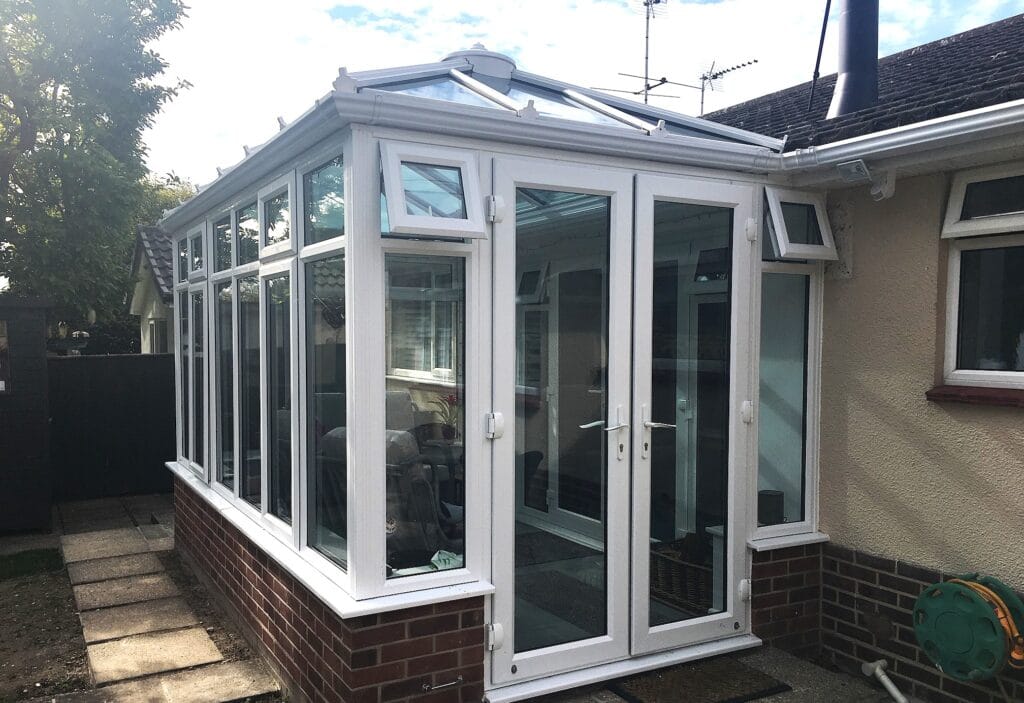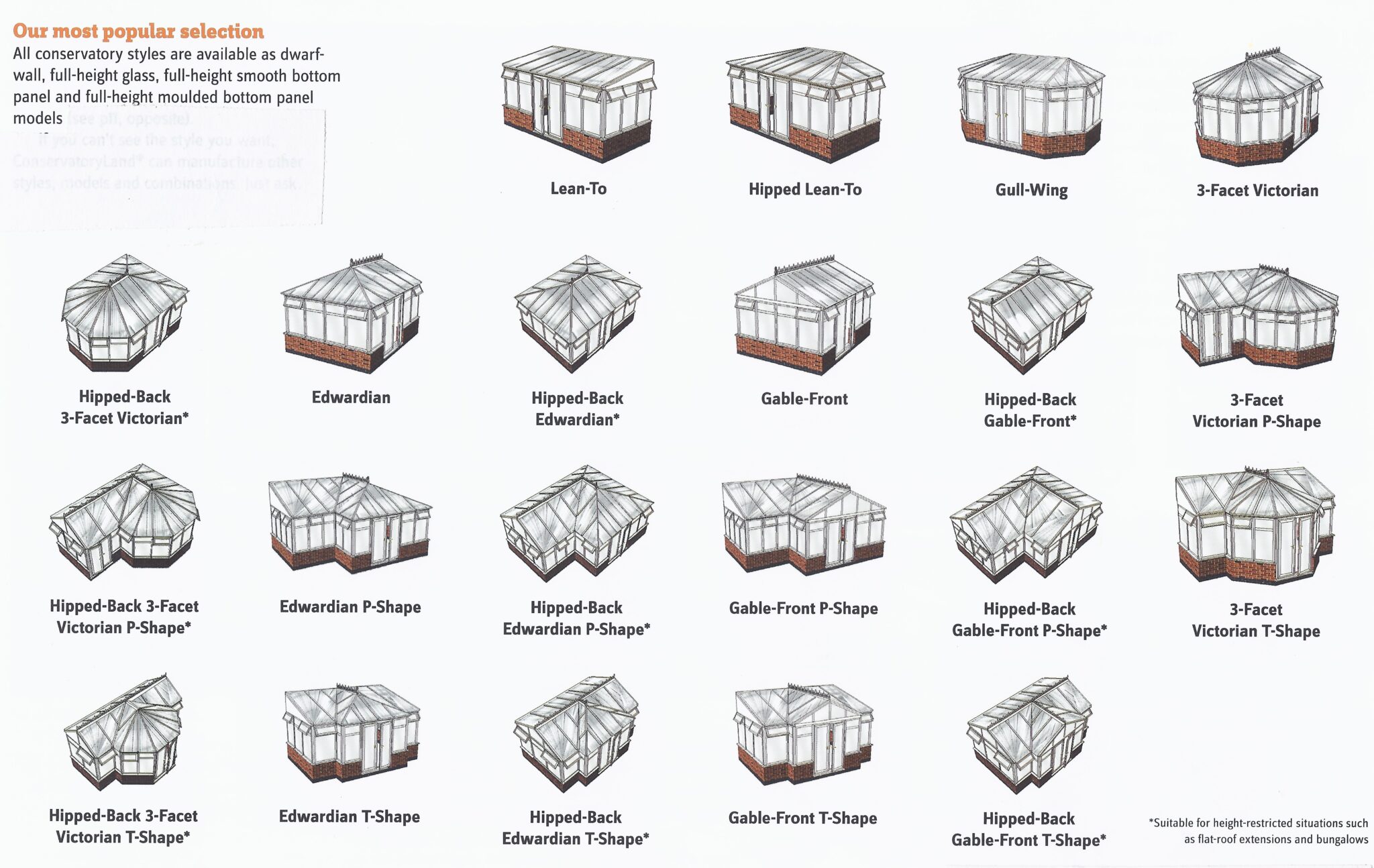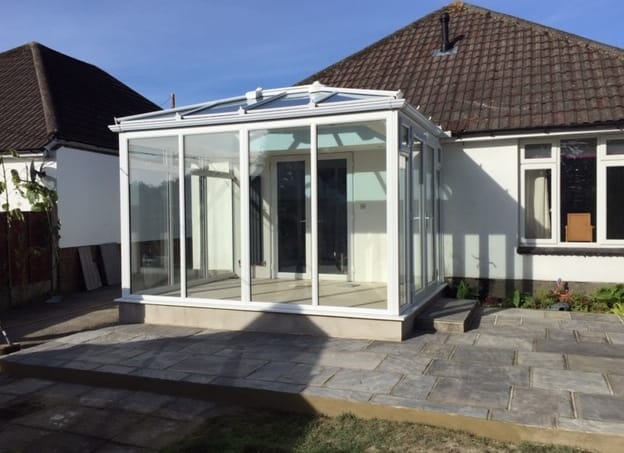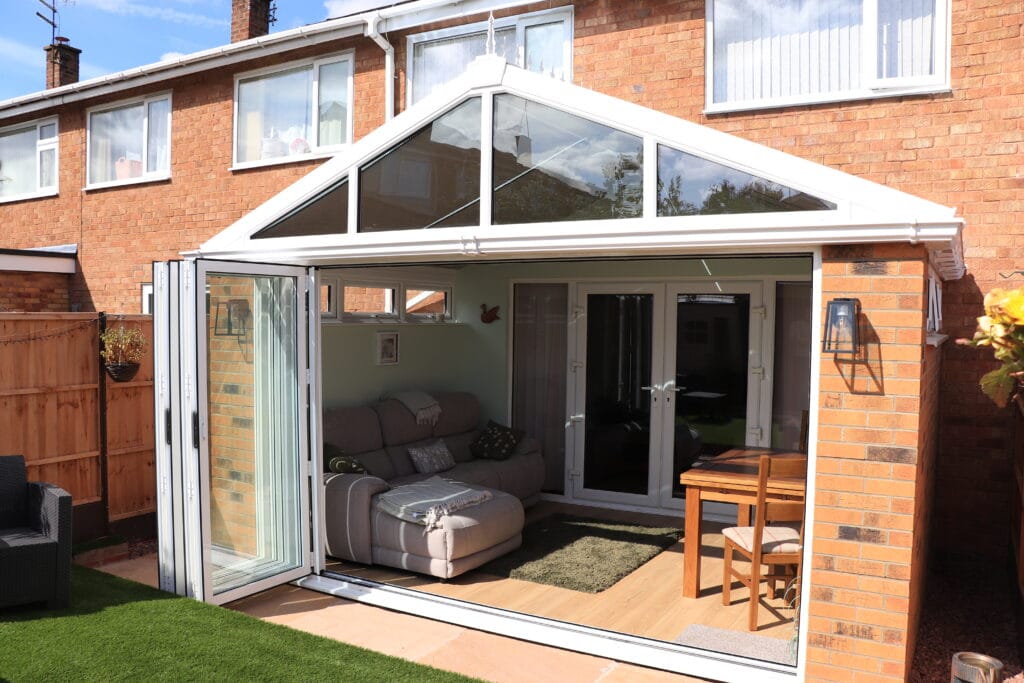
A Professional You Can Trust.
Robby Branson Builders Ltd
New Conservatories: Design, Build & Customize Your Dream Space

A new conservatory isn’t just an extension—it’s a seamless expansion of your living space, designed for comfort, style, and practicality. Starting with a blank canvas allows you to explore modern solutions that eliminate common issues of the past. Unlike older builds, today’s conservatories are not the heat traps or ice boxes they once were—advancements in materials and construction techniques ensure a comfortable space all year round.
Whether you’re envisioning a bright and airy retreat, a stylish dining area, or a versatile home office, the right design choices will make your conservatory a natural fit for your home.
Many conservatories do not require planning permission, but certain guidelines apply under Permitted Development (PD) rules. Similarly, most conservatories are exempt from full building regulations, making the process quicker and more cost-effective. These two factors alone can save you thousands of pounds and considerable time—we’ll guide you based on your home’s specific layout.
With a wide range of styles, roofing options, and custom features available, you can design a conservatory that blends beautifully with your home and enhances your lifestyle.
The shape and style of your conservatory play a key role in both aesthetics and functionality. Whether you prefer a classic Victorian, a modern Lean-to, or a fully bespoke design, the right choice depends on your available space and intended use.
Additionally, budget may be a key factor, influencing material choices, design complexity, and customization options.

If your home has a flat roof extension or is a bungalow, you’ll need a conservatory style that works within height limitations. Hipped-Back (HB) designs are the perfect solution, providing a stylish and functional option while maintaining the required lower pitch.
Available Styles for Height-Restricted Situations:
All conservatory styles are available with:
Dwarf or full height walls
Full-height glass
Full-height with smooth bottom panels
Full-height with Moulded bottom panel designs
From classic Victorian designs to modern Lean-to structures, conservatories come in a variety of shapes to suit different homes and preferences. The diagram below showcases some of the most popular options, including hipped-back variations ideal for height-restricted properties.
Whether you prefer a fully glazed structure, a solid dwarf wall, or a smooth panel finish, each design can be customized to match your home’s character.
Not sure which is best for your home? We’ll guide you through the choices to find the perfect fit.


Your conservatory’s roof plays a major role in thermal performance, aesthetics, and overall cost. Some options require planning permission or building regulations, while others offer a simpler installation process.
Glass, LivinRoof, Polycarbonate, and most Orangery Roofs typically do not require planning permission or building regulations, making them cost-effective and quicker to install.
Lightweight Tiled, Flat, and Solid Roofs often require building regulation approval, as they significantly alter the structure. These options tend to be more expensive due to approvals, fees, additional insulation, and labour requirements.
Looking for specific colours or finishes? View our Roofing Page for full details on materials, customisation options, and installation considerations.
Select your preferred roof type below:
[ ] Glass Roof
[ ] Polycarbonate Roof
[ ] LivinRoof
[ ] Lightweight Tiled Roof
[ ] Solid Roof
[ ] Flat Roof
Want to compare another option? Select a second choice before continuing.
Your conservatory isn’t just about the space—it’s about how it connects to your home and garden. The right windows and doors enhance comfort, security, and energy efficiency, ensuring your conservatory works for you all year round. New advancements make this easier than ever before.
Choosing the right window style is essential, but deciding which sections should open can significantly impact ventilation, cost, and safety. While uPVC is the most common material, other options include aluminium and a wood-aluminium combination—both considered premium upgrades for enhanced durability and aesthetics.
Casement Windows – The most common choice for conservatories, offering excellent ventilation. Openers can be positioned in the upper or lower sash, but each opener adds to the cost.
Tilt & Turn Windows – Ideal for multi-story properties, allowing for inward opening for easy cleaning and better airflow.
Sliding Sash Windows – A space-saving, traditional option that works well in tight boundary situations.
Safety Tip: If your conservatory has only one external door, it’s essential to include at least one full-sized opening window to serve as a secondary escape route.

Your choice of door can transform access and functionality:
Single Entrance Doors – Practical and secure where space is limited. Can be used in combination with other doors.
French Doors – Timeless, elegant, and perfect for garden access up to 1.5m wide.
Sliding Patio Doors – Space-saving with wide, uninterrupted views.
Bi-Fold Doors – Create an open-plan feel with seamless indoor-outdoor flow. New innovations now allow pre-approved opening widths of up to 4m.
There’s no one-size-fits-all approach, but window and door choices should be addressed early in the process. Explore more styles, colour choices and customization options on our Windows & Doors page.
[Explore Windows & Doors →
A strong foundation is the backbone of any new conservatory, while the right walling system enhances both appearance and energy efficiency. Whether you’re upgrading an existing structure or starting from scratch, choosing the best base and walling solution is key to long-term durability and thermal performance.
For new conservatories, a modern steel base system eliminates the need for deep strip excavations, reducing both installation time and disruption. Prefabricated for precision, these insulated steel frames provide a solid, thermally efficient foundation and can be installed in a fraction of the time compared to traditional methods.

Superior insulation – Can exceed current energy efficiency requirements, helping reduce heat loss.
Cost-effective – Overcomes underground obstructions without expensive excavation.
Minimal disruption – Reduces the need for heavy groundwork while maintaining structural integrity.
With a wood floor as the standard finish, there’s no need for long drying periods like those required for cement-based floor screeds.
Traditional strip foundations may offer the lowest initial cost, but they can quickly become more expensive if underground obstacles are uncovered or if the ground slopes significantly. In many cases, this makes a steel base system the better short and long-term investment. Additionally, strip foundations require extensive excavation, leading to higher costs for groundwork, landscaping, and post-installation repairs.
Your conservatory walls should complement your home while maximizing thermal efficiency. Choose from:
Brick, Block, or Stonework – A classic, durable choice for dwarf walls or full-height sections with conventional cavity insulation.
Modular Walling Systems – A lightweight, highly insulated alternative that replicates brick, stone, or render finishes and can be installed in less than a day.
Learn more about our construction options:
Visit our [Walling Page] and [Base Page] for a deeper look at available styles and materials.
Modern conservatories have come a long way in thermal efficiency and design, and one of the most significant advancements has been in eaves beam technology. Historically, traditional conservatories suffered from heat loss at the roof-to-eaves junction, where both the roofing material attachment and the aluminium eaves beam itself lacked proper insulation or sealing.
With today’s enhanced eaves beam designs, these weaknesses have been effectively addressed. Thermally broken profiles now provide improved insulation, reducing heat transfer and helping maintain a more comfortable indoor climate year-round.
Beyond thermal performance, modern interior eaves beams also serve an aesthetic function, creating a sleek, finished look inside the conservatory. This design innovation allows for the seamless integration of downlighting, providing discreet yet effective illumination that enhances the atmosphere and usability of the space.

Enhanced thermal performance – Reduces heat loss and improves energy efficiency.
Sleek, modern appearance – Provides a high-end, finished look.
Built-in downlighting options – Enhances both functionality and ambiance.
Looking for more details? Contact us to discuss how the different types of eaves beam upgrades and integrated downlighting can improve your conservatory’s comfort and aesthetics, with budget options available.
More information to follow
More information to follow